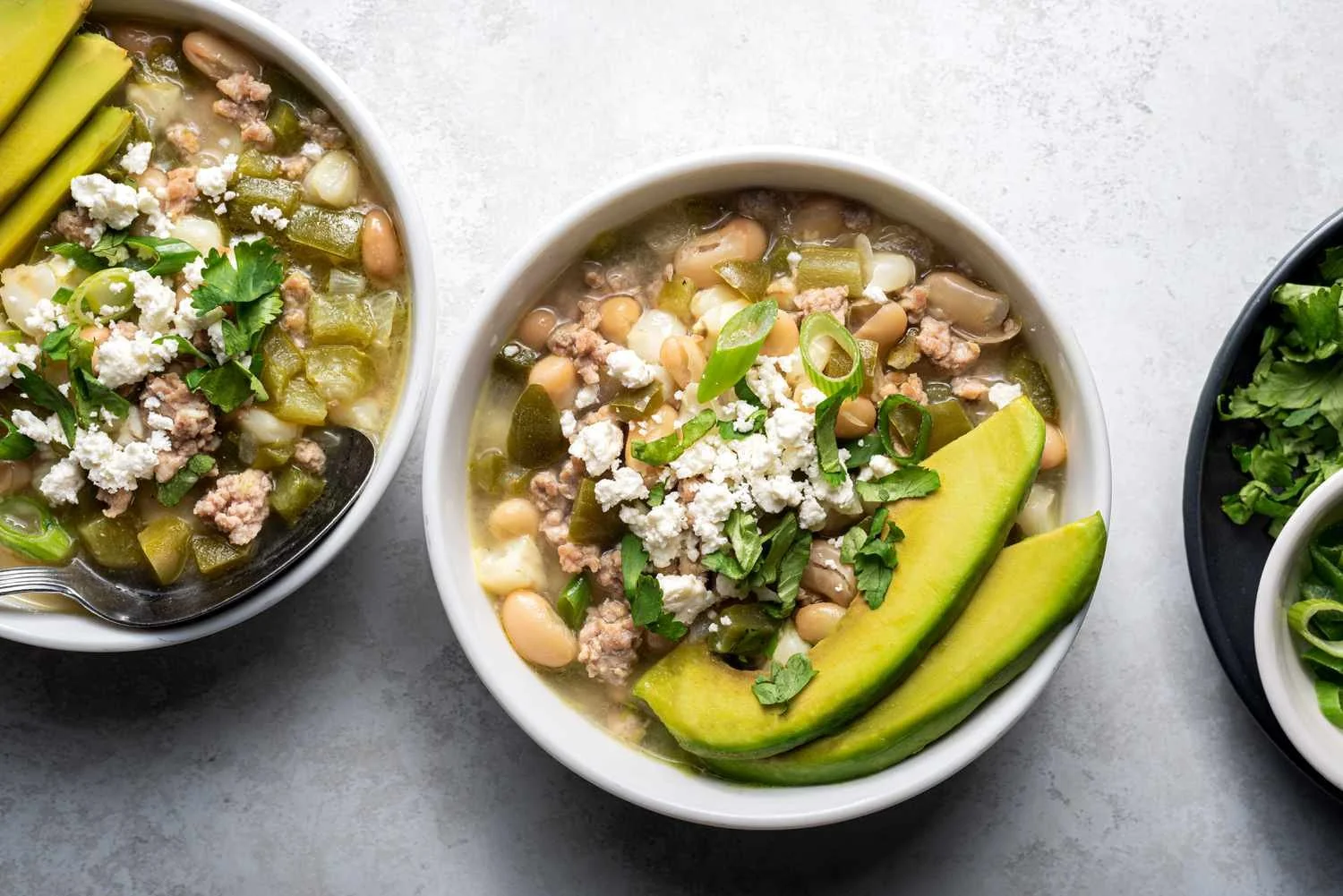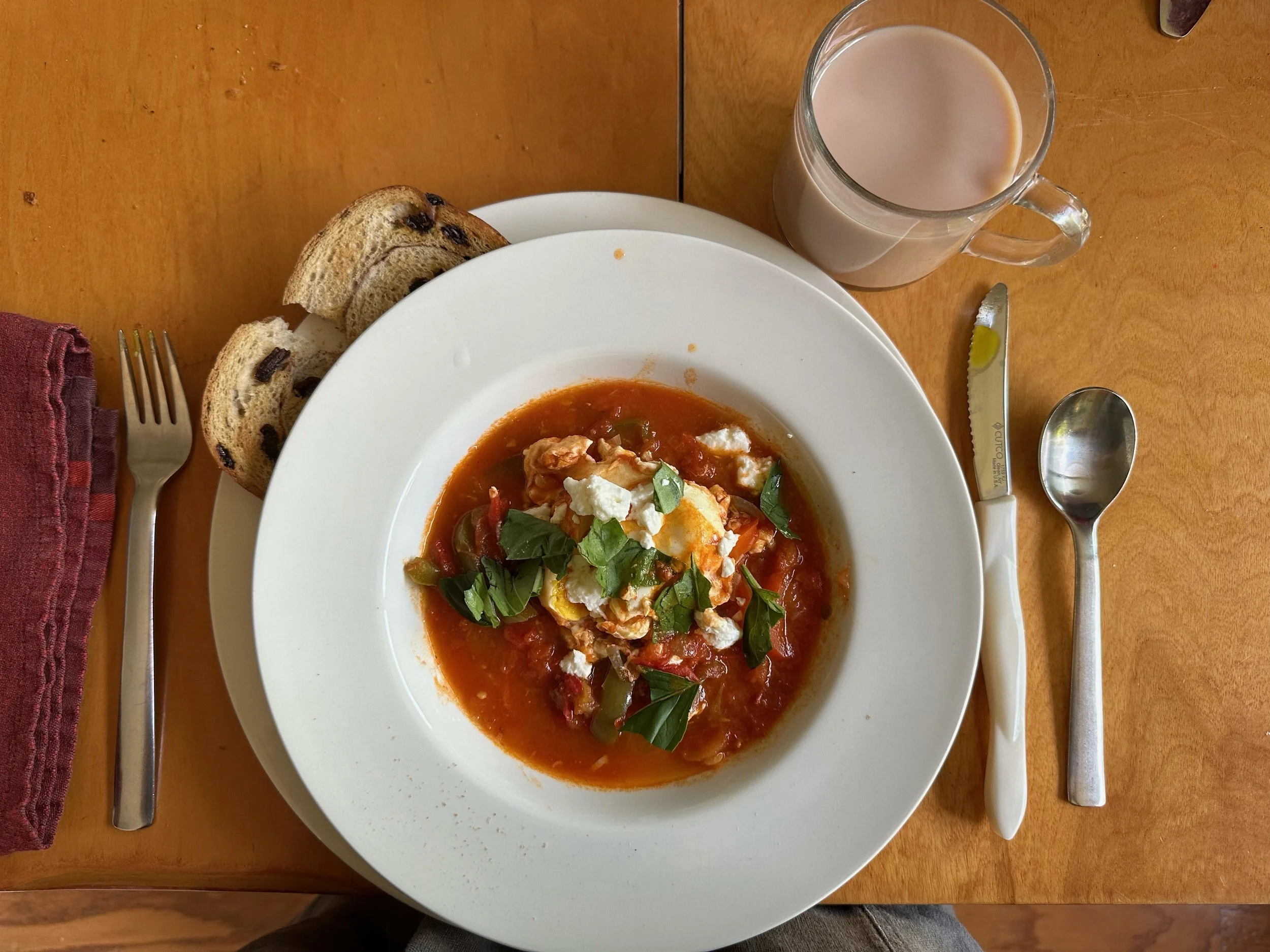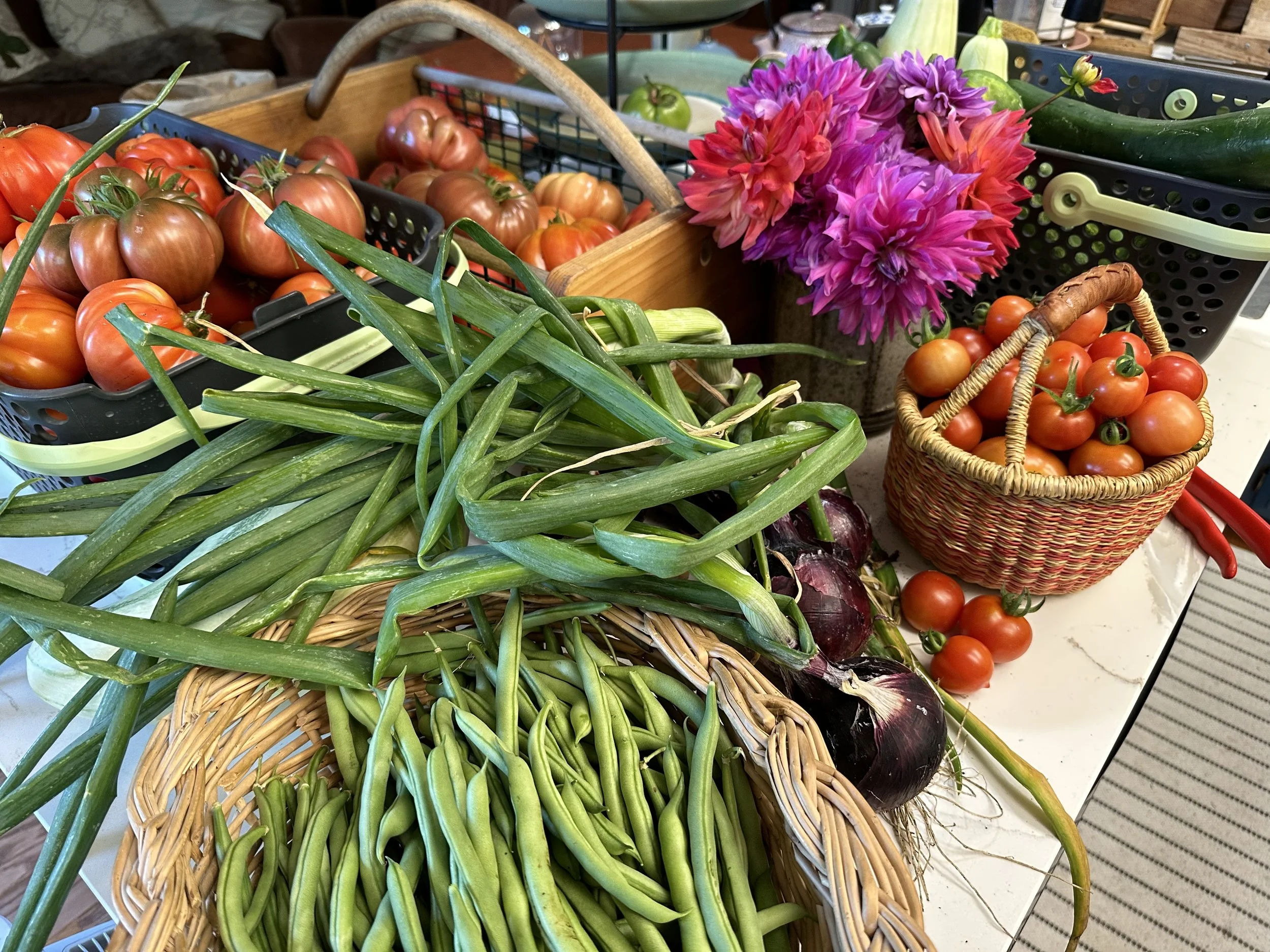In the Kitchen:
The holidays are a time for coming together, sharing gratitude, and indulging in delicious meals. If you're hosting Thanksgiving this year and have a vegan or two on the guest list, fear not! Accommodating a vegan diet doesn't have to throw a wrench into your favorite holiday recipes. You don’t have to focus on making every dish vegan, and most vegan friends and relatives will appreciate the effort and options you provide them. Here are some simple tips and tricks to ensure your Thanksgiving feast is a simple and drama-free hit for everyone.
Photo source pexels.com by Nicole Michalou
1. Vegan Substitutions Omnivores Won’t Notice
Many Thanksgiving recipes can be easily veganized without compromising flavor. Swap dairy milk for cashew cream or oat milk in mashed potatoes, use vegetable broth instead of chicken broth in stuffing, and consider plant-based butter for your rolls. These swaps are so seamless; your non-vegan guests probably won't even notice the difference. If you’re an omnivore that can’t compromise the butter in the mashed potatoes, wait to add the dairy until the final mix and set aside appropriate portions using a vegan substitute. It may be an extra dish, but your vegan guests will hopefully feel gracious enough to help clean up after the meal instead of sitting down to watch the game.
2. Embrace Plant-Based Staples
When planning your menu, focus on the abundance of delicious plant-based staples available. Think hearty vegetables, grains, legumes, and fruits. A roasted vegetable medley or a quinoa salad can be just as satisfying as traditional dishes. Don't forget about the power of herbs and spices to elevate flavors!
3. Watch Out for Easy-to-Miss Non-Vegan Ingredients
Some non-vegan ingredients can sneak into your dishes, so keep an eye out for them. Common culprits include honey, chocolate, gelatin, and certain wines that might use animal products in the fining process. Read labels carefully or opt for vegan-certified products to avoid any accidental slip-ups.
4. Mindful Etiquette for Omnivores
It's essential to remind non-vegan guests to be mindful of the vegan options. While curiosity is natural, it's polite not to devour all the vegan dishes out of sheer interest. Make sure your vegan guests have had their fill before allowing others to give it a try.
5. Online Resources for Guidance
If you're feeling overwhelmed, there are countless online resources to guide you through the vegan Thanksgiving adventure. Websites like "Minimalist Baker," "Oh She Glows," and "The Vegan Society" offer a plethora of easy-to-follow vegan recipes that even the most novice cook can master. If you’re still overwhelmed, reach out to your vegan guest to see if they have a favorite recipe you can follow.
6. Potluck Approach
If the thought of preparing a vegan-friendly Thanksgiving feels daunting, consider a potluck approach. Politely ask your vegan guests if they'd like to contribute a vegan entree or side dish. It's a win-win – they get to enjoy their favorite dishes, and you have one less thing to worry about.
7. Don’t Stress or Overthink the Menu!
Most vegan guests are accustomed to menus that don’t 100% accommodate their diets. It’s wonderful to be an inclusive host, but you don’t have to make the entire meal vegan. Do your best to provide options for everyone, but you don’t have to master a Vegan Beef Wellington to provide a great meal. If all else fails, have some vegan ice-cream on hand for desert!
8. No Politics at the Dinner Table
The choice to follow a vegan lifestyle is a personal one, and Thanksgiving is not the time to debate it. Let your gathering be a celebration of togetherness and gratitude rather than a platform for dietary discussions. After all, the holidays are stressful enough without adding a side of debate to the table!
Hosting a vegan-friendly Thanksgiving doesn't have to be a high-stakes affair. With a bit of creativity and flexibility, you can create a feast that satisfies everyone around the table. Remember, it's about sharing love, gratitude, and, of course, a delicious meal that accommodates all dietary preferences. Happy Thanksgiving everyone!
Oh, and if you do want to master a delicious Vegan Mushroom Wellington, here’s a recipe that we adore! Vegan Mushroom Wellington
Recipe:
A green chili recipe, whether prepared with meat or as a vegan dish, offers a burst of flavors and textures that make it absolutely delicious in its own unique way.
In the meat-based version, succulent ground beef or diced pork adds a rich and hearty element to the dish. The meat is perfectly seasoned with aromatic spices like cumin and chili powder, creating a savory, umami depth that complements the mild heat of the green chilies. As the meat simmers with tomatoes and beans, it absorbs the flavors, becoming tender and juicy. Topped with melted cheddar cheese and a dollop of sour cream, it's a comforting, satisfying bowl of warmth that's ideal for meat lovers.
On the other hand, the vegan version of green chili offers a delightful medley of plant-based ingredients. Diced tomatoes and green chilies create a tangy and slightly spicy base, while black beans and pinto beans contribute a creamy, hearty texture that is both filling and nutritious. The seasoning, including ground cumin and chili powder, infuses the dish with a robust, earthy flavor. The addition of sweet corn and lime juice adds a refreshing and zesty dimension. Vegan sour cream and avocado slices provide a creamy contrast that makes every spoonful a harmonious blend of flavors and a visual feast for the senses.
In both versions, what truly makes green chili delicious is its adaptability. You can adjust the level of spiciness to suit your taste, making it as mild or as fiery as you prefer. Plus, the green chili's versatility allows for personal touches like garnishing with fresh cilantro or customizing with your favorite toppings.
Whether you savor the hearty, meaty goodness of the traditional recipe or opt for the vibrant, plant-based alternative, green chili has a way of warming your heart and your palate. It's a dish that brings people together over shared bowls, providing comfort and satisfaction regardless of dietary preferences. The deliciousness of green chili transcends culinary boundaries, making it a beloved choice for anyone seeking a flavorful and soul-warming meal.
Verde Vegan Chili
Ingredients:
· 2 tablespoons vegetable oil
· 1 large onion, diced
· 3 cloves garlic, minced
· 2 cans (14 ounces each) diced green chilies
· 1 can (14 ounces) diced tomatoes
· 1 can (14 ounces) black beans, drained and rinsed
· 1 can (14 ounces) pinto beans, drained and rinsed
· 2 cups vegetable broth
· 2 teaspoons ground cumin
· 1 teaspoon chili powder
· Salt and pepper to taste
· 1 cup corn kernels (fresh or frozen)
· Juice of 1 lime
· Chopped fresh cilantro (optional, for garnish)
· Sliced avocado (optional, for garnish)
· Vegan sour cream (optional, for garnish)
Instructions:
- In a large pot or Dutch oven, heat the vegetable oil over medium heat. Add the diced onion and minced garlic, and sauté until the onion is translucent and fragrant.
- Stir in the diced green chilies, diced tomatoes, black beans, pinto beans, vegetable broth, ground cumin, chili powder, salt, and pepper.
- Bring the mixture to a simmer, then reduce the heat to low, cover, and let it simmer for about 30-40 minutes, stirring occasionally.
- About 10 minutes before serving, add the corn kernels and lime juice to the pot. Stir well and continue to simmer until the corn is heated through.
- Taste and adjust the seasonings as needed. If you like it spicier, you can add more chili powder or a dash of hot sauce.
- Serve the vegan green chili hot, garnished with chopped fresh cilantro, sliced avocado, and vegan sour cream if desired. Enjoy!
Verde Chili Con Carne
Ingredients:
· 1 pound (450g) lean ground beef or diced pork
· 2 tablespoons vegetable oil
· 1 large onion, diced
· 3 cloves garlic, minced
· 2 cans (14 ounces each) diced green chilies
· 1 can (14 ounces) diced tomatoes
· 1 can (14 ounces) black beans, drained and rinsed
· 1 can (14 ounces) pinto beans, drained and rinsed
· 2 cups chicken or beef broth
· 2 teaspoons ground cumin
· 1 teaspoon chili powder
· Salt and pepper to taste
· 1 cup shredded cheddar cheese (optional, for garnish)
· Sour cream (optional, for garnish)
· Chopped fresh cilantro (optional, for garnish)
Instructions:
- In a large pot or Dutch oven, heat the vegetable oil over medium heat. Add the diced onion and minced garlic, and sauté until the onion is translucent and fragrant.
- Add the ground beef or diced pork to the pot and cook until browned, breaking it apart with a spatula as it cooks. Drain any excess fat if necessary.
- Stir in the diced green chilies, diced tomatoes, black beans, pinto beans, chicken or beef broth, ground cumin, chili powder, salt, and pepper.
- Bring the mixture to a simmer, then reduce the heat to low, cover, and let it simmer for about 30-40 minutes, stirring occasionally.
- Taste and adjust the seasonings as needed. If you like it spicier, you can add more chili powder or a dash of hot sauce.
- Serve the green chili hot, garnished with shredded cheddar cheese, sour cream, and chopped fresh cilantro if desired. Enjoy!
Shakshuka with Poached Eggs
Recipe:
This recipe was given to me by Deirdre Davis, chef extraordinaire, who runs Pinoli Farmhouse Kitchen. She adapted it from an Ottolenghi recipe in his book, Jerusalem (2012). Shakshuka is a popular breakfast, brunch, or lunch fare in Israel. Served with crusty bread, it makes a delicious and hardy meal. I can vouch for that! —Bonnie Hariton
INGREDIENTS (for 6 servings)
□ 1 teaspoon whole cumin seeds, toasted and ground
□ 1 teaspoon whole coriander seeds, toasted and ground
□ 4-5 cloves garlic, about 1 tablespoon, finely chopped
□ 2 large red bell peppers, cut into 1/4" by 2" slices
□ 1 medium white onion, in 1/4" slices
□ 5 cups heirloom tomatoes, chopped
□ 2 tablespoons olive oil
□ 1 heaping tablespoon harissa or Korean gochujang (spicy chili pepper paste)
□ 2 tablespoons tomato paste
□ 3/4 teaspoon salt
□ 6 whole eggs
□ 1/3 cup crumbled feta cheese
□ Several fresh basil leaves, torn in small pieces
INSTRUCTIONS
1. Toast cumin and coriander seeds together in a small, heavy, dry frying pan (without oil) over medium-high heat until they darken slightly, 1 or 2 minutes. Grind with a mortar and pestle or a spice grinder.
2. Chop garlic. Chop red bell peppers and onion. Chop tomatoes. Crumble feta. Tear up the basil leaves.
3. Heat olive oil. Add harissa or gochujang and stir. Add toasted spices and garlic and cook until just fragrant.
4. Follow with tomato paste and salt. Cook a few more minutes.
5. Add onions and bell peppers. Stir over medium heat about 6-8 minutes till softened.
6. Add tomatoes and bring to a simmer. Cook uncovered for about 10 minutes until the sauce thickens to your liking.
7. Taste for seasoning.
8. Make 6 little dips in the sauce. Gently break an egg into each dip.
9. Simmer gently for 8-10 minutes, covered, until the whites are just set and the yolks are as runny or as firm as you prefer.
10. To serve, put some of the sauce and an egg into a bowl. Sprinkle with feta cheese and basil leaves.
Note:
Leftover sauce keeps well in a glass jar in the refrigerator for several days. For two people, I usually make the entire sauce and poach three eggs the first day, then re-heat leftover sauce and poach three eggs in it the next day.
In The Garden:
Today's harvest from the garden of Bonnie and Dan Hariton in Pinole
The Seven Of Pentacles by Marge Piercy
Under a sky the color of pea soup
she is looking at her work growing away there
actively, thickly like grapevines or pole beans
as things grow in the real world, slowly enough.
If you tend them properly, if you mulch, if you water,
if you provide birds that eat insects a home and winter food,
if the sun shines and you pick off caterpillars,
if the praying mantis comes and the ladybugs and the bees,
then the plants flourish, but at their own internal clock.
Connections are made slowly, sometimes they grow underground.
You cannot tell always by looking what is happening.
More than half the tree is spread out in the soil under your feet.
Penetrate quietly as the earthworm that blows no trumpet.
Fight persistently as the creeper that brings down the tree.
Spread like the squash plant that overruns the garden.
Gnaw in the dark and use the sun to make sugar.
Weave real connections, create real nodes, build real houses.
Live a life you can endure: Make love that is loving.
Keep tangling and interweaving and taking more in,
a thicket and bramble wilderness to the outside but to us
interconnected with rabbit runs and burrows and lairs.
Live as if you liked yourself, and it may happen:
reach out, keep reaching out, keep bringing in.
This is how we are going to live for a long time: not always,
for every gardener knows that after the digging, after
the planting,
after the long season of tending and growth, the harvest comes.
Marge Piercy (b. 1936) is an American progressive activist, feminist, and writer.
Spiritual Touchstone:
Spiritual Practice and the Arts
By Rev. Dr. Melinda V. McLain
“Art enables us to find ourselves and lose ourselves at the same time.”
—Thomas Merton, Trappist monk and author (1915-1968)
Having just returned from our annual opera-cation in Santa Fe, New Mexico, I’ve been thinking about the art and life of the great painter Georgia O’Keefe. Although her art is classified as modern and abstract, her paintings have always seemed quite realistic to me because I have spent a lot of time in the high deserts where she painted things pretty much the way they actually look, albeit she paints them from her own unique perspective. For her flowers, she zooms in on the minute details, while her landscapes are sweeping vistas replete with the amazing colors of New Mexico. But if you take the time to visit these places and pay attention, you too can see what she saw in a given place.
Being able to recognize that everything can be seen or experienced in a new or different way is a great gift from the practice of making art to our spiritual practice. Making and/or seeing art can also help us to exercise our ability to see and perceive the world in a new way.
We all have the ability to perceive the same things quite differently once we take into account the way our experiences, education, and current life situation affect our ability to make sense of the world. This is a wonderful gift AND it can be a source of difficulty in a diverse community. The difficulty comes when any one of us simply assumes that others share our same point of view or worse yet that our point of view is exclusively correct.
Recognizing that a flower can be experienced differently and/or seen differently is a good way to correct our sense that “my way” is the only way. This understanding can then be applied to disagreements between people and can become the basis for expanding our empathy - the willingness to recognize the point of view of someone else.
Do you enjoy looking at art? Have you ever felt your heart stirred by a particular painting or sculpture? How does the experience of making or seeing art affect your spirituality?
In the Garden:
As August arrives in the Bay Area, home gardeners are rewarded with an abundance of fresh and flavorful ingredients ready to be harvested and savored. The warm climate and coastal influences create a unique environment that allows for a diverse array of crops to thrive during this time of the year. From vibrant vegetables to succulent fruits, let's explore the ingredients that are in season and discover some delectable recipes to make the most of your August garden harvest.
Tomatoes:
Arguably the star of the summer garden, tomatoes thrive in the Bay Area's climate. Varieties like Early Girl, Sun Gold, and Brandywine are known for their exceptional taste. A classic Caprese Salad is an excellent way to showcase their freshness, combining tomatoes with fresh basil, mozzarella, and a drizzle of olive oil. For a heartier option, whip up a batch of homemade marinara sauce using your garden tomatoes and enjoy it over pasta or as a base for pizza.
Recipe Suggestion: Heirloom Tomato Galette
Enjoy the rich flavors of heirloom tomatoes in a rustic galette. Layer slices of different colored tomatoes over a buttery pie crust, sprinkle with fresh thyme, and bake until golden brown. Serve with a dollop of herbed ricotta for a delightful summer treat.
Zucchini and Summer Squash:
Zucchini and summer squash thrive in the Bay Area's warm climate, yielding a generous harvest throughout the season. Try your hand at making crispy zucchini fritters or experiment with stuffed summer squash, filling them with a mixture of quinoa, herbs, and cheese.
Recipe Suggestion: Grilled Zucchini Tacos
Fire up the grill and slice zucchini lengthwise before grilling until charred and tender. Fill soft corn tortillas with grilled zucchini, black beans, diced avocado, and a drizzle of lime crema for a refreshing and satisfying taco night.
Berries:
Strawberries, blueberries, raspberries, and blackberries thrive in the Bay Area's mild summer climate. These sweet gems are perfect for snacking, baking, or adding to refreshing summer beverages.
Recipe Suggestion: Mixed Berry Salad with Honey-Lime Dressing
Toss a medley of fresh berries with mixed greens, toasted almonds, and crumbled goat cheese. Drizzle with a honey-lime vinaigrette for a light and vibrant summer salad.
Peppers:
From bell peppers to spicy varieties, peppers thrive in the Bay Area's summer warmth. Stuff bell peppers with a mixture of rice, beans, and herbs for a satisfying vegetarian dish, or use jalapenos to add a kick to salsas and sauces.
Recipe Suggestion: Roasted Red Pepper and Walnut Dip
Blend roasted red bell peppers, toasted walnuts, garlic, olive oil, and a dash of lemon juice for a flavorful dip. Serve with pita bread or fresh vegetable sticks for a delectable appetizer.
The Bay Area's summer garden offers an incredible array of fresh ingredients that inspire a multitude of delicious recipes. From juicy tomatoes to vibrant berries and versatile peppers, the season's bounty invites creativity and experimentation in the kitchen. Embrace the flavors of summer and savor the joy of harvesting your homegrown produce to create memorable dishes that celebrate the beauty of the Bay Area's agricultural riches.
Additional Resources:
Ripening Dates for Fruits and Vegetables in California
Please share your Summer home garden recipe ideas in the comments!
Image: skinnytaste.com/heirloom-tomato-galette
In the Garden:
Contra Costa County, is blessed with a diverse array of native pollinators that play a crucial role in our ecosystems. Bees, butterflies, birds, and other pollinators are responsible for pollinating numerous plant species, ensuring the production of fruits, vegetables, and seeds, while also supporting the overall health of the environment. However, these essential pollinators are facing numerous challenges, including habitat loss, pesticide exposure, and climate change. As responsible stewards of our environment, it is our duty to support and provide safe spaces for local pollinators to thrive.
One of the pollinator groups that requires urgent attention and support are the native bees. These crucial insects play a vital role in the region's ecosystem by facilitating the pollination of numerous plant species, including many crops that contribute to the local agricultural economy.
However, our local ecosystem depends on more than just bees for efficient pollination. Several local pollinators play vital roles in maintaining the balance of the region's flora. One such crucial pollinator is the monarch butterfly (Danaus plexippus). These graceful insects undertake epic migrations, making them essential for the propagation of various flowering plants. Ensuring the preservation of their habitat, including native milkweed species that serve as their larval host plants, is crucial for their continued well-being.
Here are some practical ways to lend a helping hand to these invaluable creatures.
Embrace Native Flora:
One of the most effective ways to support local pollinators is by incorporating native plants into your landscape. Native flora has evolved alongside local pollinators, offering them a readily available food source. Contra Costa County boasts a rich biodiversity, and planting native species like California poppy, ceanothus, and buckwheat will attract and sustain a variety of pollinators throughout the year. Native plants also require less water and maintenance, making them ideal for creating pollinator-friendly gardens.
Create Pollinator-Friendly Gardens:
Transforming your outdoor space into a pollinator-friendly garden is an excellent way to provide a safe and welcoming environment for these creatures. Opt for a variety of flowering plants that bloom at different times of the year, ensuring a constant food source. Avoid the use of pesticides, herbicides, and chemical fertilizers, as these can harm pollinators directly or indirectly. Instead, embrace organic gardening practices and explore natural pest control alternatives, such as companion planting.
Build Pollinator Habitats:
Pollinators require suitable habitats not only for feeding but also for nesting and shelter. Consider adding features like bee houses, butterfly puddling stations, and birdhouses to your property. Bee houses offer nesting sites for solitary bees, while butterfly puddling stations provide essential minerals and moisture for butterflies. Birdhouses encourage local bird species, some of which are vital pollinators, to make your garden their home.
Preserve Natural Areas:
Beyond your property, support pollinators by advocating for the preservation of natural areas in Contra Costa County. These spaces serve as critical sanctuaries for native flora and fauna, allowing pollinators to thrive without human intervention. Participate in local conservation efforts and support organizations working to protect and restore natural habitats.
Educate and Spread Awareness:
Raise awareness about the importance of pollinators within your community. Organize workshops, presentations, or garden tours to educate others about the significance of supporting local pollinators and how they can make a positive impact. Encourage local schools, businesses, and municipalities to implement pollinator-friendly practices as well.
By embracing native flora, creating pollinator-friendly gardens, building habitats, preserving natural areas, and educating others, we can make a substantial difference in supporting local pollinators. Our actions, no matter how small, collectively contribute to the well-being of these essential creatures and help maintain a thriving ecosystem for generations to come. Let us come together as responsible stewards of our environment, nurturing nature's heroes and ensuring a brighter future for pollinators and ourselves.
Additional Resources:
Monarch Conservation Program
Pollinator Conservation Resources
Summer Reading
by Melinda V. McLain
SPIRITUAL TOUCHSTONE
Most folks who know me, know that I love to read. And I love to get recommendations for good books and share the same with others. I’m also a HUGE fan of libraries and encourage everyone to visit your local library often. And don't forget to check out online library resources where you can borrow materials in a digital format to read on your phone, computer or e-reader. Contra Costa Library has a robust online collection that I love!
Recently, I happened to read a bio of the author Agatha Christie, a beloved author of detective fiction who left behind many mysteries about her own life that writers are still trying to unravel. One of the wonderful techniques she used in her novels is known as an “unreliable narrator”.
Here’s what the the AI platform ChatGPT says is an unreliable narrator:
An unreliable narrator is a literary or storytelling device where the narrator's credibility or truthfulness is called into question. It refers to a narrative perspective that presents the story from the viewpoint of a character who may be deceptive, misguided, mentally unstable, or lacking in self-awareness. The unreliability can stem from intentional deceit or unintentional factors such as limited knowledge, personal bias, or distorted perception of events.
By using an unreliable narrator, authors can create ambiguity, suspense, or irony within a narrative. It challenges readers to critically evaluate the information presented and to question the narrator's interpretations or motives. This technique adds depth and complexity to the storytelling, as it allows for multiple perspectives and encourages readers to actively engage with the text.
Unreliable narrators can take various forms, such as:
Naive Narrator: The narrator lacks experience or understanding, leading them to misinterpret or misunderstand events. They may innocently convey incorrect information due to their limited knowledge or naivety.
Mentally Unstable Narrator: The narrator's mental state is compromised, leading to distortions, hallucinations, or delusions. Their perceptions may not align with reality, making their account unreliable.
Dishonest or Manipulative Narrator: The narrator intentionally deceives the reader by lying, omitting crucial details, or presenting a biased perspective. Their motives for distortion may vary, such as seeking sympathy, justifying their actions, or manipulating the reader's emotions.
Unconscious Bias: The narrator may possess certain biases or prejudices that influence their storytelling. These biases can lead to a skewed or one-sided portrayal of events and characters.
Unreliable narrators can be found in various literary works, including novels, short stories, and even films. Some famous examples include Humbert Humbert from Vladimir Nabokov's "Lolita," Patrick Bateman from Bret Easton Ellis's "American Psycho," and Holden Caulfield from J.D. Salinger's "The Catcher in the Rye."
And of course, Agatha Christie used it very well in “The Murder of Roger Ackroyd” plus the biographer suggests that Christie herself intentionally shaped her public image in a way that made her an unreliable narrator of her own life. For example, she never actually explained her disappearance for nine days in 1926. Did she wander off to a spa because she had temporary amnesia? Was she punishing her adulterous husband? Or was her disappearance an amazing publicity stunt. Only Agatha knew for sure, or did she?
After reading this book and checking out ChatGPT (another unreliable narrator?), I’ve been noticing that I am often an unreliable narrator of my own life too. I tell myself things are fine - when they are not. And sometimes I do the reverse, I actually fail to be ok when things really are just lovely. And just like in fiction, I often get things wrong because of naivete, unconscious bias or I'm just a bit mentally wobbly. I'd like to think I avoid dishonesty or manipulation, but I'm perfectly capable of "shading" a story so that it will improve your perception of me or someone I love.
How ‘bout you? And what difference does it make if we can begin to recognize ourselves as unreliable narrators of our own reality? Would it give you more empathy or ability to spot fraudsters at the outset? What if, recognizing our own fallibilities, helped us to be more humble?
May your summer be filled with great reads that lead you to a greater understanding of yourself and others.
Photo by: Magda Ehlers at pexels.com

















